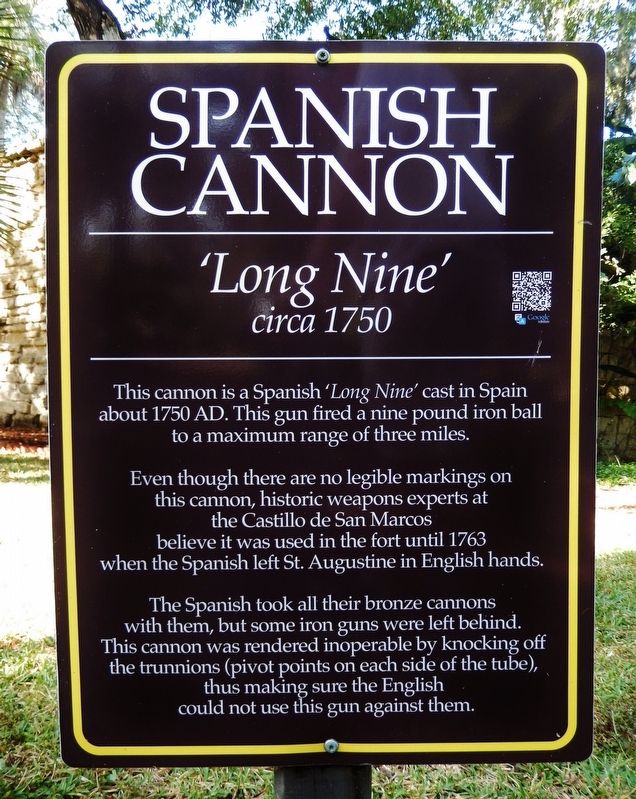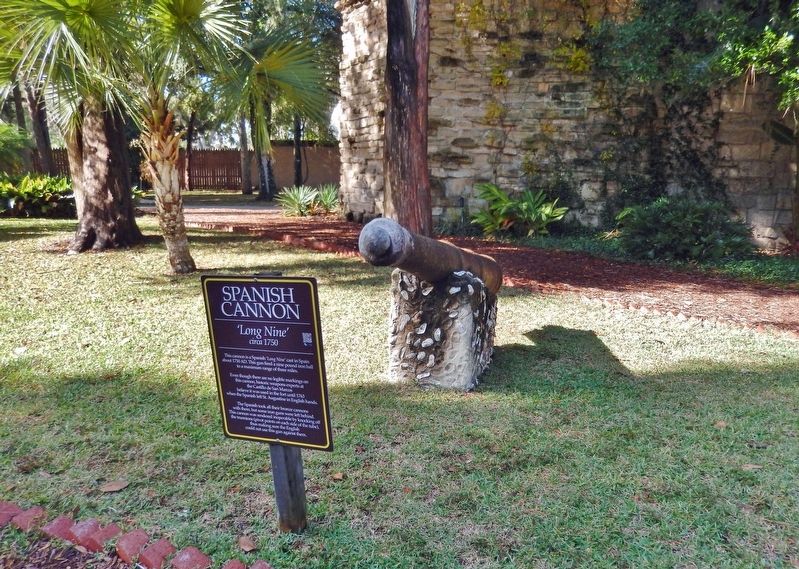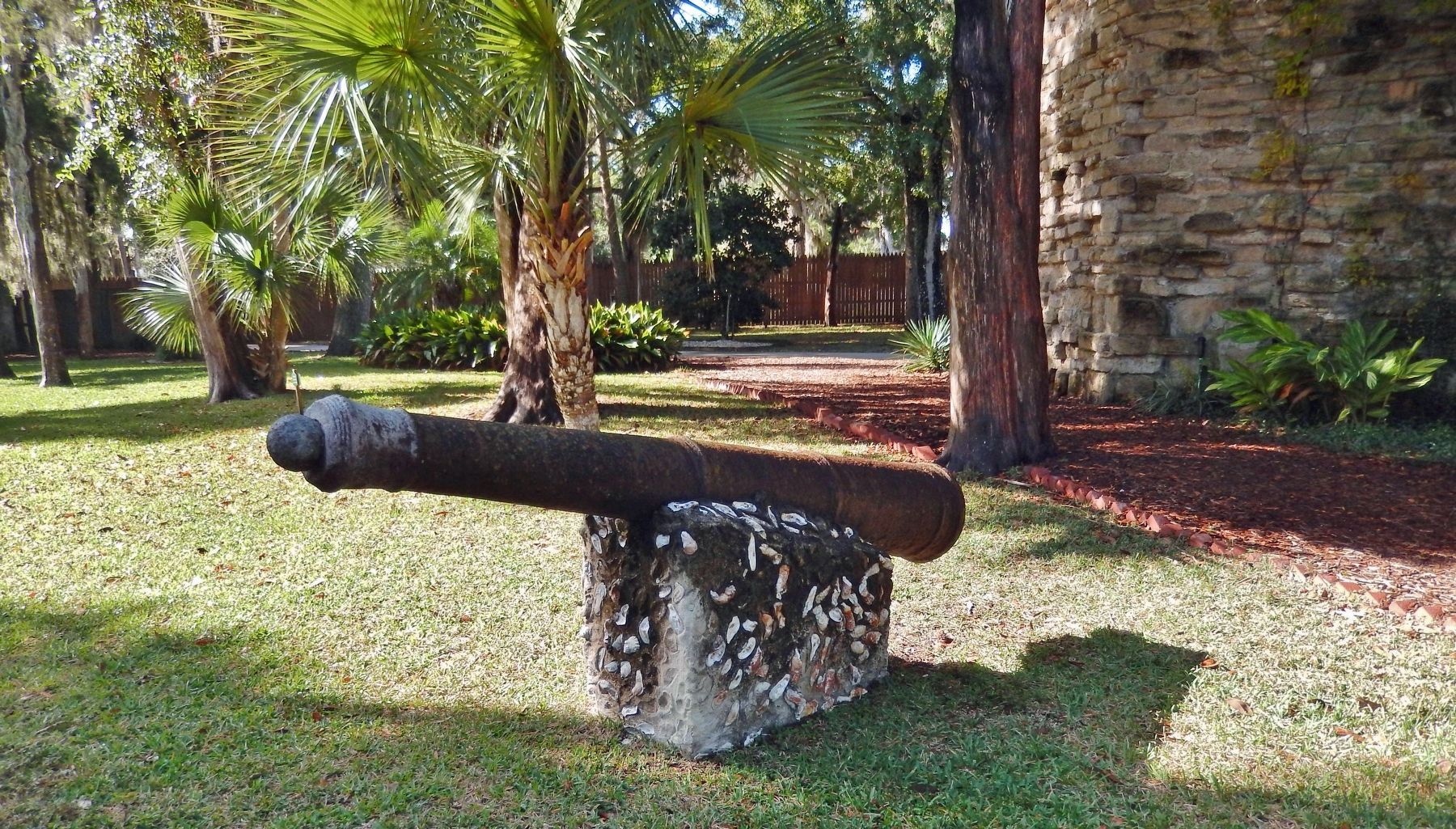St. Augustine in St. Johns County, Florida — The American South (South Atlantic)
Spanish Cannon
'Long Nine'
— circa 1750 —
Even though there are no legible markings on this cannon, historic weapons experts at the Castillo de San Marcos believe it was used in the fort until 1763 when the Spanish left St. Augustine in English hands.
The Spanish took all their bronze cannons with them, but some iron guns were left behind. This cannon was rendered inoperable by knocking off the trunnions (pivot points on each side of the tube), thus making sure the English could not use this gun against them.
Topics. This historical marker is listed in these topic lists: Anthropology & Archaeology • Colonial Era • Forts and Castles • Waterways & Vessels. A significant historical year for this entry is 1750.
Location. 29° 54.397′ N, 81° 18.94′ W. Marker is in St. Augustine, Florida, in St. Johns County. Marker can be reached from Williams Street east of Magnolia Avenue. Marker is located along the interpretive trail in Ponce de León's Fountain of Youth Archaeological Park. Touch for map. Marker is at or near this postal address: 11 Magnolia Avenue, Saint Augustine FL 32084, United States of America. Touch for directions.
Other nearby markers. At least 8 other markers are within walking distance of this marker. Spanish Bayonet (here, next to this marker); Ancient Civilization Uncovered! (a few steps from this marker); 1565 Menendez (a few steps from this marker); 1513 La Florida (a few steps from this marker); Juan Ponce (a few steps from this marker); Tabby / Coquina (a few steps from this marker); Coontie (a few steps from this marker); 4,000 BC (a few steps from this marker). Touch for a list and map of all markers in St. Augustine.
Related markers. Click here for a list of markers that are related to this marker. Ponce de León's Fountain of Youth Archaeological Park
Also see . . . Naval artillery in the Age of Sail: Long nine.
One unique naval gun was the long nine. It was a proportionately longer-barreled 9-pounder. It was typically mounted as a bow or stern chaser where it was not perpendicular to the keel, and this also allowed room to operate this longer weapon. In a chase situation, the gun's greater range came into play. However, the desire to reduce weight in the ends of the ship and the relative fragility of the bow and stern portions of the hull limited this role to a 9-pounder, rather than one which used a 12- or 24-pound shot.(Submitted on December 23, 2021, by Cosmos Mariner of Cape Canaveral, Florida.)
Credits. This page was last revised on December 29, 2021. It was originally submitted on December 22, 2021, by Cosmos Mariner of Cape Canaveral, Florida. This page has been viewed 702 times since then and 69 times this year. Photos: 1, 2, 3. submitted on December 23, 2021, by Cosmos Mariner of Cape Canaveral, Florida.


